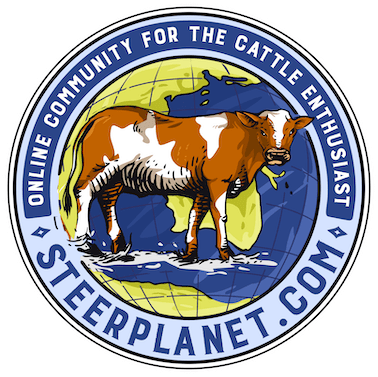knabe
Well-known member
what if dna analysis shows the older pure lines have other stuff in them?
didnt people lie or make mistakes back then too?
didnt people lie or make mistakes back then too?

r.n.reed said:Make sure there is no Cruikshank breeding in them,a chapter in the 1919 book,Kansas Shorthorns discusses that issue.Also one of the early herd books from the 1850's discusses the cloud over some of the first importations and other quote pure cattle in the early herd books.I have a couple of herd books from the Kentucky assoc.from the 1870's who started their own organisation because they felt their cattle were more pure than others.
NHR said:Roy Lovaas has some pretty good info and photos of Natvie stock.
http://www.rlshorthorns.com/native_shorthorns.htm
wiseguy said:My father (John Wise) and Ralph Pope owned a Par Defender grandson '68 PAR CHERRY '71 2 . We still have semen in the tank on him. Look him up on the ASA website he was one of the more popular bulls of this breeding and has over 130 registered progeny. As the story goes my dad purchased this bull against my grandfathers wishes with Ralph, it turned out to be a great investment though because each time for the next year that my dad visited Ralph he had a check for him. I like to remind him of this often when he shoots down my ideas.
x3482495
Regnum Tattoo Name Birthdate
x3482495 '68 PAR CHERRY '71 2
Sex Male Color Roan Horn P
%
Breeder FRANK J. HAUMONT
Pedigree
x2607690 CHERRY MAGNET 6TH
x2875011 PAR DEFENDER
x2185091 MAID OF PROMISE H 49TH
Sire: x3394681 PAR PROMISE 68 3RD
x2875011 PAR DEFENDER
x3139086 MAID OF PROMISE H 97TH
x2763502 MAID OF PROMISE H 74TH
x3256911 FREKEBA MAJESTY EDWARD
x3329570 LILAC O K 67
x3106279 LILAC LADY 82D
Dam: x3410380 CHERRY 398
x3173717 LILAC PAR 18TH
x3301635 CHERRY 361ST
x2922099 CHERRY 228TH
wiseguy said:Looking for pictures. Talked more with my dad. He was homozygous polled, 6 frame, dark roan, and sired great females. He did comment however, that even though he had a 10 CE and -4.0 BW his calves were not super small at birth more like 75 to 85 pounds. He said the best part of this bull was his offsprings efficiency on forage.
Funny story on this bull. I am an Ag teacher and for the last seven years I have been using his semen to show my students about ampules. I bet I have thrown out 40 amps over the last 7 years. Guess I should have been more careful, but I really never thought anyone would use him again.